Tracing their roots to New York City and San Francisco a group of poets, known as the Beat Generation, were actively causing a ruckus during the mid to late 1950s. They were often thought to be a precursor to the 1960s counterculture movement and were interested in experimental drugs, the natural world, Zen Buddhism, and other Asian religious practices. Inspired by modernist literature, jazz rhythms, and the Surrealists, their poetry and novels were free verse and stream of consciousness. Some well known names of the Beat Poets are Jack Kerouac, Willam Boroughs, and Allen Ginsberg, including Reedies Lew Welch ‘50, Philip Whalen ‘51, and Gary Snyder ‘51.
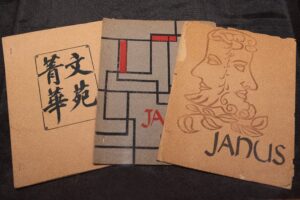
While at Reed, Gary Snyder, Phillip Whalen, and Lew Welch met and became friends. The three of them lived together in the Portland neighborhood of Sellwood, and created a “literarti subculture” where they shared their works with one another and in the student led publication Janus.
Welch, an English major, wrote his thesis on Gertrude Stein, being drawn to poetry after reading her work.1 His thesis was eventually published posthumously as How I Read Gertrude Stein. Snyder, who attended Reed on a “grant-in-aid” scholarship, was an Anthropology major whose thesis focused on the analysis of a Haida myth.2 He drew from multiple fields of study (including anthropology, folkloristics, psychology, and literary theory) to write his thesis under Loyd Reynolds. Whalen enrolled as a Literature major who attended Reed on the GI Bill and wrote his thesis, The Calendar, on Robert Graves’ translation of “The Song of Amergin.”3
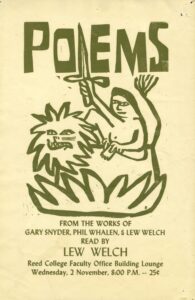
After graduating from Reed, both Whalen and Snyder worked as fire-spotters on Mount Baker in Washington. In 1952, they moved to San Francisco to hone their craft as poets. While in San Francisco, they befriended fellow poets Allen Ginsberg, Jack Kerouac, Amiri Baraka, Diane di Prima, and Lawrence Ferlenghetti, co-founder of City Lights Booksellers and Publishers. Both Whalen and Snyder were major influences on Kerouac’s The Dharma Bums,4 and in 1955, Snyder and Whalen performed at the famous Six Gallery reading (where Allen Ginsberg debuted Howl). The Six Gallery reading is considered the birth of the Beat Generation, and San Francisco’s bookstore, City Lights, published and distributed Beat literature. Welch was not present at this reading because following graduation he moved to New York, and later Chicago, to work as an advertising copywriter and enrolled in a Master’s program at the University of Chicago. After becoming disillusioned with Chicago, he eventually settled in San Francisco to focus on his poetry.5 However, despite being dispersed throughout the country, during the late 1950s and early 1960s, Snyder, Welch, and Whalen, as well as Allen Ginsberg, frequently visited Reed to share their poetry.
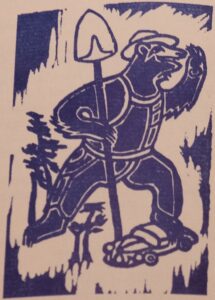
Snyder’s love of the natural world led to his interest in Buddhism and North American Indigenous religious practices, which can be seen throughout his work and personal life. First introduced to mountain climbing at thirteen, Snyder had “climbed a number of summits” by the time he was twenty.6 In 1955, the First Zen Institute of America gave Snyder a scholarship to study Buddhism in Japan. In 1956, Snyder arrived in Japan, where he spent the next decade living between there and California. His first two poetry collections, Myth and Texts and Riprap and Cold Mountain Poems, were based on his travels in Japan. Snyder went on to win a Pulitzer prize in 1974 for his collection of poems entitled Turtle Island, as well as numerous other prizes for his poetry.
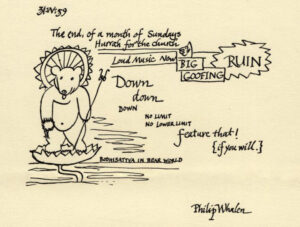
Similarly interested in nature, Buddhism, and Zen practices, Whalen’s poetry presents these themes with his unique stream of consciousness style. Along with this style, he frequently sketched in order to get his pen “warmed up” and these illustrations often accompanied his writing.7 In 1973, Whalen became a Zen monk in Kyoto, Japan and spent two decades at the Zen centers in San Francisco and Santa Fe. He became a Zen priest in the 1970s, and in 1991 he became the abbott for the Hartford Street Zen Center in San Francisco until he had to retire due to his health. He continued writing and publishing poetry while fulfilling his abbott duties.
Welch’s poetry also focused on nature along with the discomfort of modern and urban America. Jazz music was a major influence, and music as a whole, is found generously in Welch’s work.8 He performed and published several collections of poetry in the 1960s including Wobbly Rock and Hermit Poems. From 1965 to 1970 he taught a workshop as part of the University of California Extension. In the mid-60s he met Magda Cregg and her teenage son, Hugh, who later adopted Welch’s first name as his stage name to become Huey Lewis.9 In 1971, Welch disappeared into the Sierra Nevada Mountains and was presumed dead.
“Poetland: The Work and Art of the Beat Poets,” is on display across from the reference desk on the first floor of the library through April 2023, to learn more about the poets featured here please visit the exhibit. For additional information and primary sources visit Reed College Special Collections and Archives Monday-Friday, 10am-4pm on Lower Level 2 of the library or to email us at archives@reed.edu.
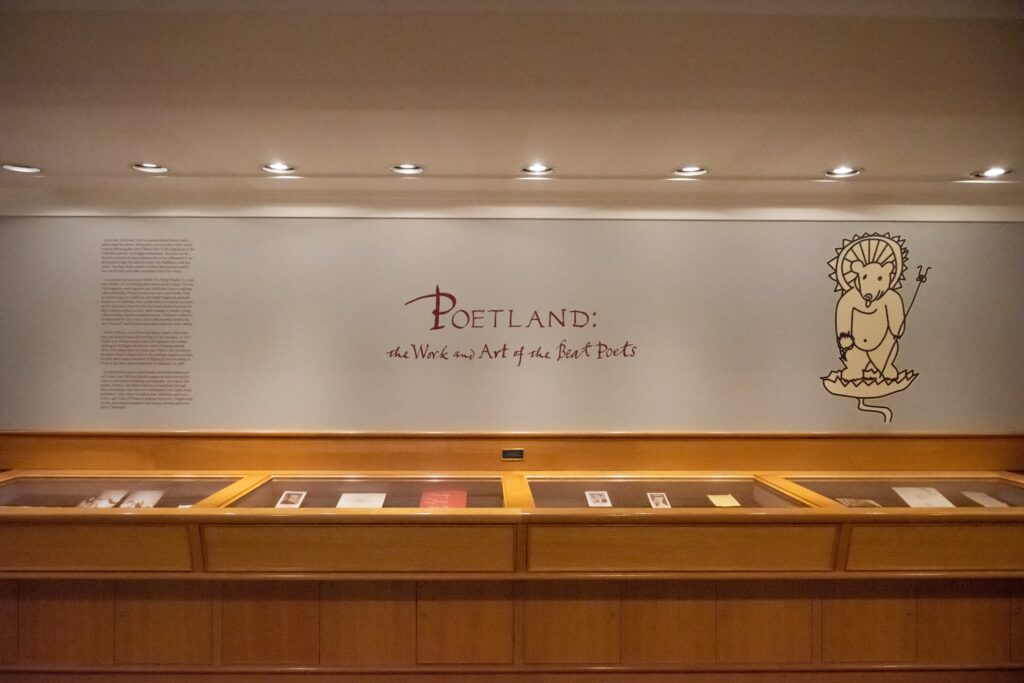
Source List:
1 Welch, L. (1996). How I Read Gertrude Stein. Grey Fox Press.
2 Snyder, Gary. Interview by John Sheehy. July 22, 1998. Reed College Oral History Project, Reed College Special Collections and Archives.
3 Schneider, D. (2015). Crowded by Beauty: The Life and Zen of Poet Philip Whalen: The Life and Zen of Poet Philip Whalen. University of California Press.
4 Suiter, J. (2003). Poets on the Peaks: Gary Snyder, Philip Whalen and Jack Kerouac (1st ed.). Counterpoint.
5 Welch, L. (1973) Chicago Poem. Ring of Bone (1st ed.). Grey Fox Press.
6 Snyder, G. (1996). Mountains and rivers without end (1st ed.). Counterpoint.
7 Whalen, P. (1966). Preface. In Highgrade: Doodles, poems. preface, Coyote’s Journal.
8 Cregg, M. (1997). Hey Lew: Homage to Lew Welch. Magda Cregg.
9 Cregg, M. (1997). Hey Lew: Homage to Lew Welch. Magda Cregg.
